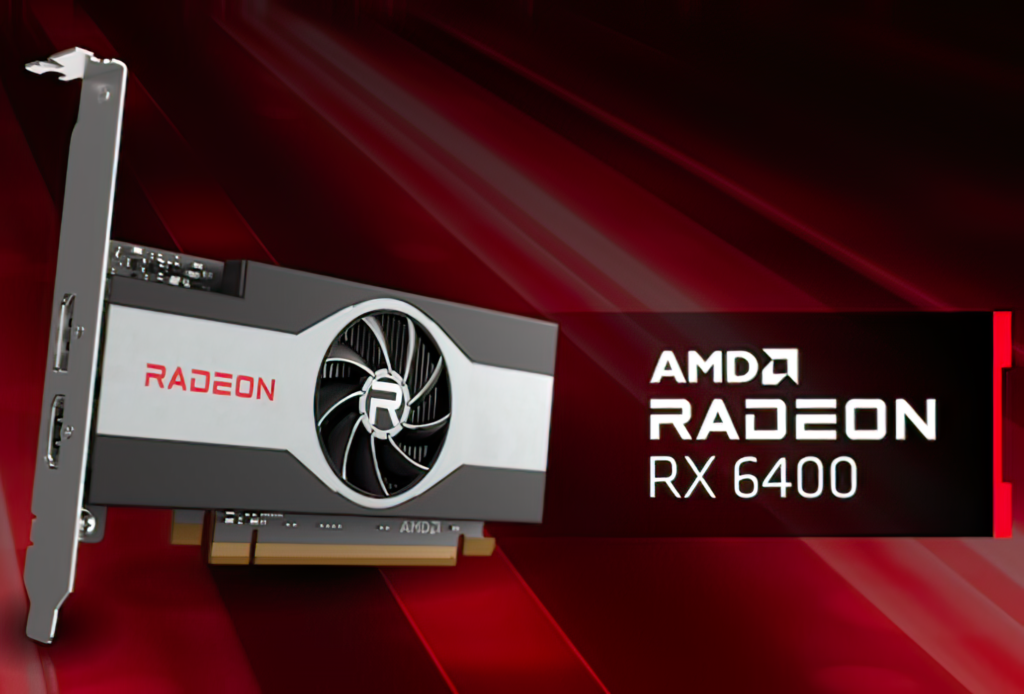TechPowerUp recently tested AMD’s new Radeon RX 6400 GPU on the slower PCIe 3.0 interface to see if there were any significant performance losses compared to PCIe 4.0 and discovered that this was the case due to the GPU’s unusual layout of only four PCIe lanes. Depending on the resolution, performance dropped by up to 14 percent on average.
AMD’s Radeon RX 6400 is a new entry-level GPU for the desktop market that uses AMD’s ultra-compact Navi 24 chip, which was originally designed for laptops. To save money, this GPU, like its bigger sibling, the Radeon RX 6500 XT, only has four PCIe 4.0 lanes.
In comparison to the Radeon RX 6500 XT, the Radeon RX 6400 has a 13 percent lower core count and memory bandwidth. Due to a drop in GDDR6 speeds to 16 Gbps, the graphics card only has 768 cores and 128 Gbps of memory capacity. However, the memory capacity remains at 4GB. The biggest advantage of the Radeon RX 6400 is its low power consumption.

When compared to PCIe 4.0, the Radeon RX 6400 running on PCIe 3.0 experienced a 14 percent drop in performance at both 1080P and 1440P in the 24 games TechPowerUp evaluated
The 4K results were considerably worse, with a performance disadvantage of 23%. However, considering the Radeon RX 6400 offers unplayable FPS on both PCIe generations, we suspect it will matter much.
F1 2021 and Doom Eternal were among the worst offenders, with performance differences of 79 percent and 43 percent at 1080P, respectively. Fortunately, almost all of the other games tested were in the 14 percent range or lower, but these two games, in particular, demonstrate how PCIe bandwidth-intensive some gaming engines can be.
TechPowerUp’s testing of the Radeon RX 6500 XT yielded roughly identical findings, with a 13 percent performance difference between PCIe 3.0 and PCIe 4.0. Even if the GPU is slower, the Radeon RX 6400 can’t get beyond Navi 24’s four-lane constraints.
The PCIe 3.0 interface of the Radeon RX 6400 was about 20% slower than the GeForce GTX 1650, which uses the identical PCIe 3.0 interface but has a much healthier x16 lane design. The Radeon RX 6400, however, performed comparably to the GeForce GTX 1650 when put on a PCIe 4.0 interface.
Also Read: AMD Radeon RX 6950 XT, RX 6750 XT, RX 6650 XT Final Specifications have finally been Confirmed








